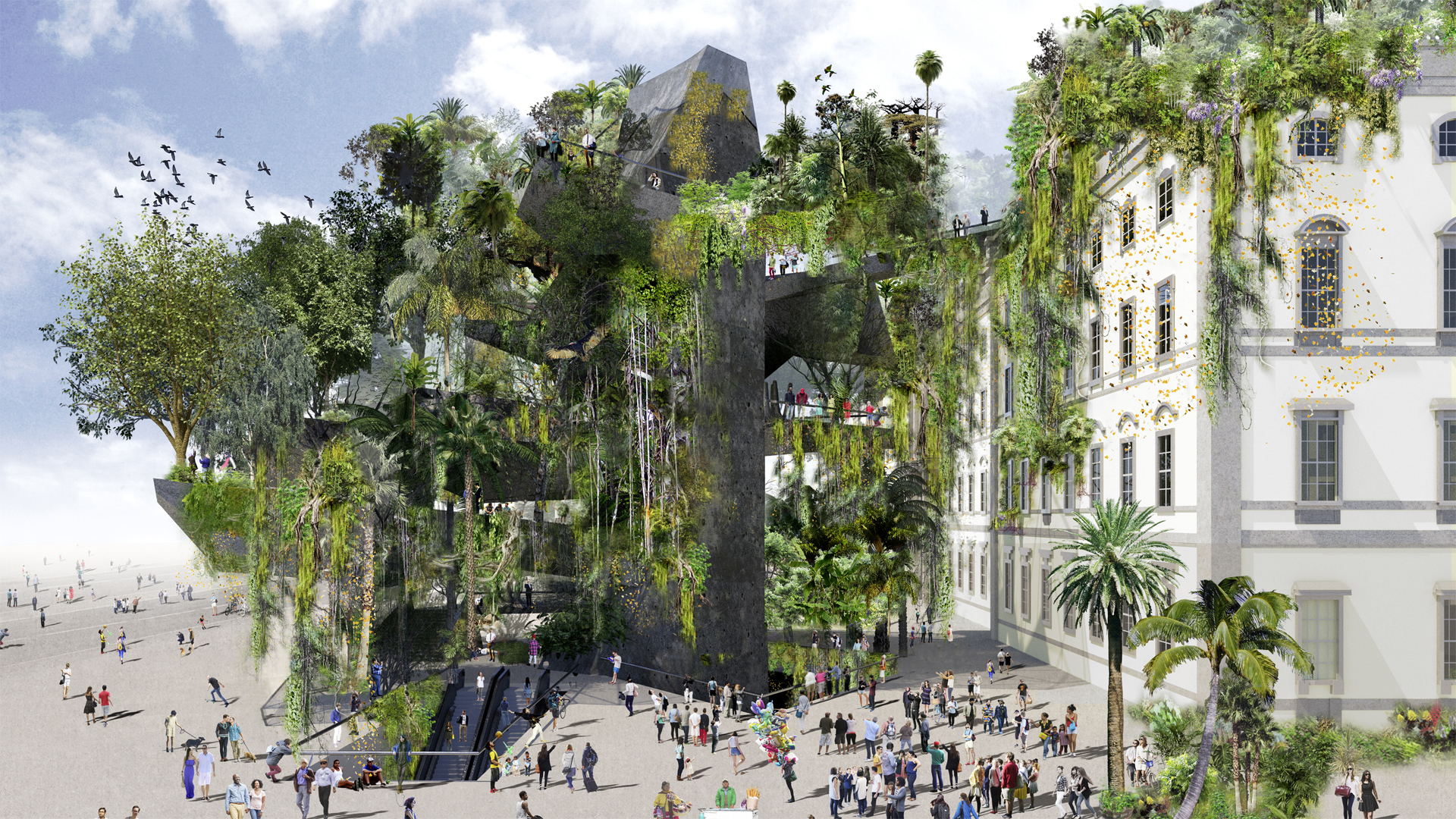Only a few construction projects in Germany are more controversial than the rebuilding of the City Palace in Berlin.
With a bold plan, the Dutch professor Frans Vogelaar knows how to break the stuck debate.
Publication, Bertus Bouman @ duitslandnieuws.nl, Berlin, 15 September 2017
In the heart of Berlin one of the most controversial buildings of the moment stands out: the rebuilding of the Berliner Stadtschloss. This building, located at the Unter den Linden, will house the Humboldt Forum . Now that the debate is seriously stuck, the Dutch professor of Hybrid Space Frans Vogelaar opens the debate with a radical proposal: he wants to transform the imposing Prussian palace into a jungle.
Berliners are stumbling for already decades on the issue of the destination of the City Palace opposite the Berliner Dom. The palace was severely damaged, but not destroyed, at the end of the Second World War. Nevertheless, the GDR government decided to blow up this symbol of Prussian power. For a long time, it remained a bare plain, only suitable as a parade ground and parking lot. Then the Palast der Republik was built, the innovative power center of DDR leader Erich Honecker. After the fall of the Berlin Wall this Palast was also torn down as asbestos was supposedly discovered in the interior of the building.
Since 2013, it is being rebuilt as a modern replica of the old Stadtschloss. This includes space for the large museum collections that are now located far from the city centre, such as the Ethnological Museum and the Museum for Asian Art. Just about every proposal for the content of the new building, which is to open in 2019, is under fire.
The Dutch professor Vogelaar, who founded Hybrid Space Lab together with architecture professor Elizabeth Sikiaridi, was invited to discuss and work on this issue.
This invitation came from politicians of the Green Party in 2015, says Vogelaar. “It was at that point unclear if there was enough money to finance the façade, and they were looking for ways to get more green around the city palace.” After the discussion, Vogelaar and Sikiardi thought that the two issues should be combined. “In addition, the City Palace carries the name of the explorer Alexander von Humboldt. Then we thought; why do not we design a green layer over the baroque façade as a Humboldt Jungle? ”
The professors developed two plans: the Humboldt Jungle, where the castle gets a green skin and the Humboldt Volcano, which provides a public access from the square. “The response was instantly and very enthusiastic, but there was also criticism: how do you manage the green in the severe Berlin winter?”
Vogelaar developed a greenhouse for the tropical plants, and a supporting construction for local plants on the outside of the giant greenhouse. “A bit like Crystal Palace. This fits with other projects of ours that deal with urban gardening and farming. We also developed such ideas for China. But actually it’s a very Dutch idea. ”
With this the professor aims to create a biotope in a building. “We Dutch are big in greenhouses and green technology. Think about what’s happening at the Wageningen University & Research. The Netherlands is leading in this kind of agile agricultural technology. This enables you to score a lot in a country where such innovations get implemented much slower.”
But the plan that should give the famous Berlin’s Museum Island a greener face will have also a completely different effect, says Vogelaar. “The Berliners have dug themselves into this endless discussion. The newspaper Der Tagesspiegel wrote recently: “let those discussions make room for the jungle”. “That’s exactly what the professor wants. “We do not opt for a side of the discussion but we want to open the pending debate and make it more pragmatic.”
The centre of Berlin must also become greener, find the minds behind the plan. “There will be a huge amount of tourists around, so there will be no space for conventional urban green solutions. And everything is of stone. With climate change, it’s not an unnecessary luxury to integrate more green as temperatures rise and we are faced with for example heavy rain showers. ”
It has not yet been decided whether Vogelaar’s plans will be realized. That’s why the Dutch planner is happy with the publicity. “The more attention, the more realistic it becomes.” His goal is to realize it around 2035. In a month, a 1: 1 simulation will be on show in Hong Kong. “Asia is the place where such plans are already executed, there is now a lot of attention for urban green. A much faster realization of such plans is possible in Asia rather than in Germany.”
Duitslandnieuws
related PROJECTS
related PRESS
